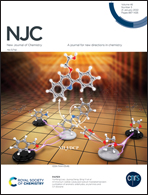Phosphate determination in environmental, biological and industrial samples using a smartphone as a capture device†
Abstract
In this article, a smartphone-based setup has been built from scratch using cheap and affordable materials. Due to the wide number of matrices in which phosphate is present, a versatile method that can be applied to different samples is of great interest. Four different matrices were selected to validate its usefulness, namely, natural water samples, blood, detergents and eye drops. All of these are known to potentially contain phosphate in their composition, and they are routinely analysed for phosphate concentration. Colour analysis was carried out using Matlab, and different colour spaces were correlated with the phosphate concentration in samples, RGB being the most suitable one. Evidences show an accurate result when comparing the phosphate concentration obtained using the smartphone with the one obtained using UV-Vis spectroscopy. Analytical parameters were studied, and the obtained sensitivity was slightly lower than that of UV-Vis (LOQUV-Vis = 0.008 mg L−1, LOQSmartphone = 0.023 mg L−1). However, the device showed a wider linear range than the UV-Vis (ranging from 0 to 4 mg L−1 of phosphorus). Overall, this work shows the versatility provided by smartphones when used as analytical devices: they can provide accurate results under the right conditions with a very low associated cost.



 Please wait while we load your content...
Please wait while we load your content...